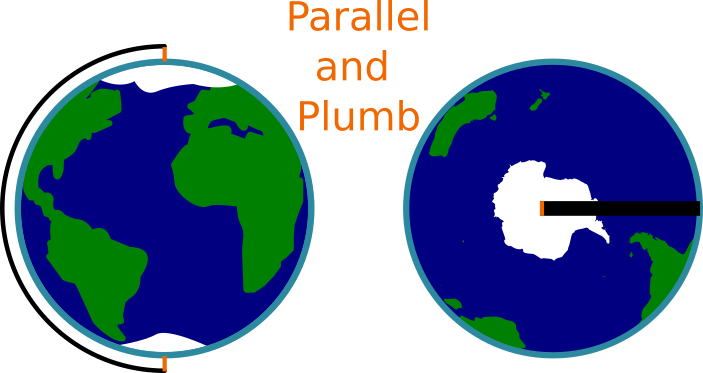Aparently, I’ve conflated Level with Plumb, the walls cannot be parallel and plumb. Due to the curve, the center of gravity for the walls would require them to angle in slightly together or not be plumb.
I can do it. Two walls: one on the north pole and one at the south pole would be parallel and plumb.

When your walls are level, you have a problem. Usually you want your walls to be plumb.
As a
pediatricpedantic but fun point, in surveying, level lines are defined to follow the Earth’s curvature. This means they are technically not straight. Horizonal lines, which are perpendicular to plumb lines, are often used as approximations for level lines.Generally it’s safe to use them interchangeably, but sometimes the distinction is important.
https://theconstructor.org/surveying/terms-in-leveling-uses/20077?amp=1

Did you mean pedantic?
Lol gotta love autocorrect 🤣
Quit being so Pedialyte about stuff, geez
Did someone call for a pediatrician?
You know how they say that gravity curves space-time?
And you remember from geometry class they told you all the rules you were learning were for “Euclidean” geometry, which had to do with flat space, and then they never mentioned it ever again?
Well basically this is a great example of where non-Euclidean geometry exists in the real world. Gravity bends space-time.
The original post has nothing to do with the curvature of space time, or non-Euclidean geometry.
This only has to do with the fact that on a plane (e.g floor of a building, of literally any size), above a gravity source (here, we can treat the earth as a point source), the gravitational vector will only be perpendicular to the surface at a single point. All other points will experience gravity at an angle.
Relatedly, some long structures that seek entirely straight have different lengths depending on the altitude you measure them. For example, an oft repeated tidbit is that the Lake Ponchartrain causeway is two inches longer when measured at the deck than at water level due to the earths curvature.



